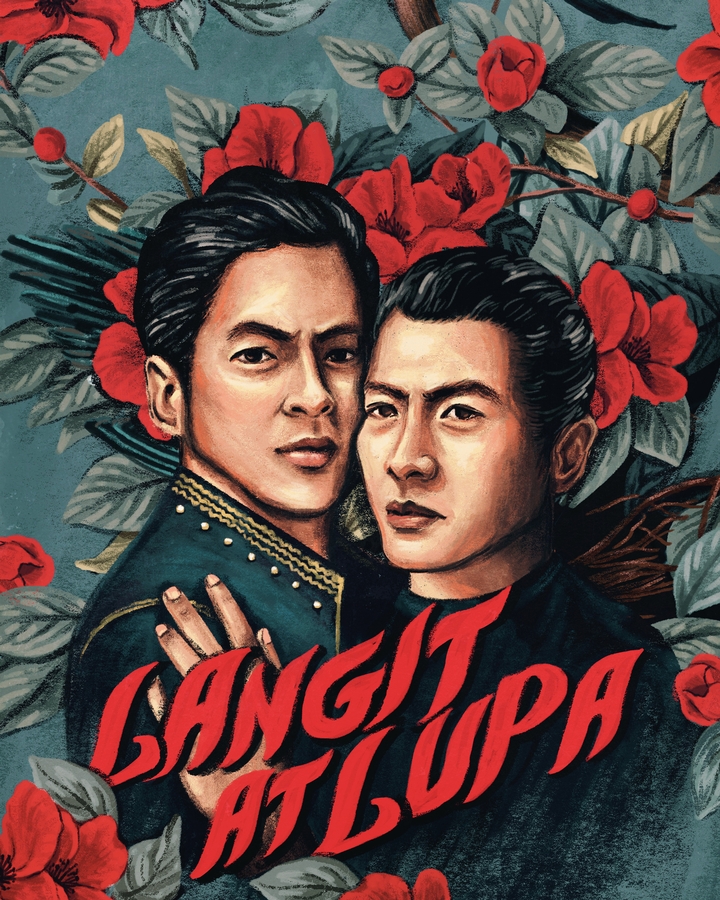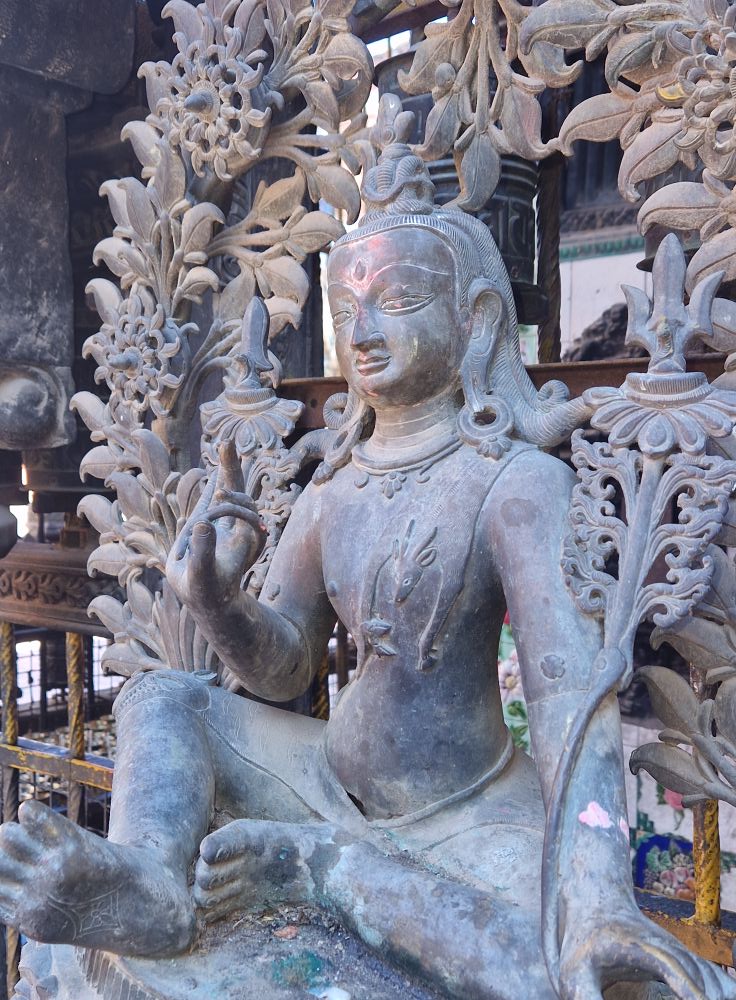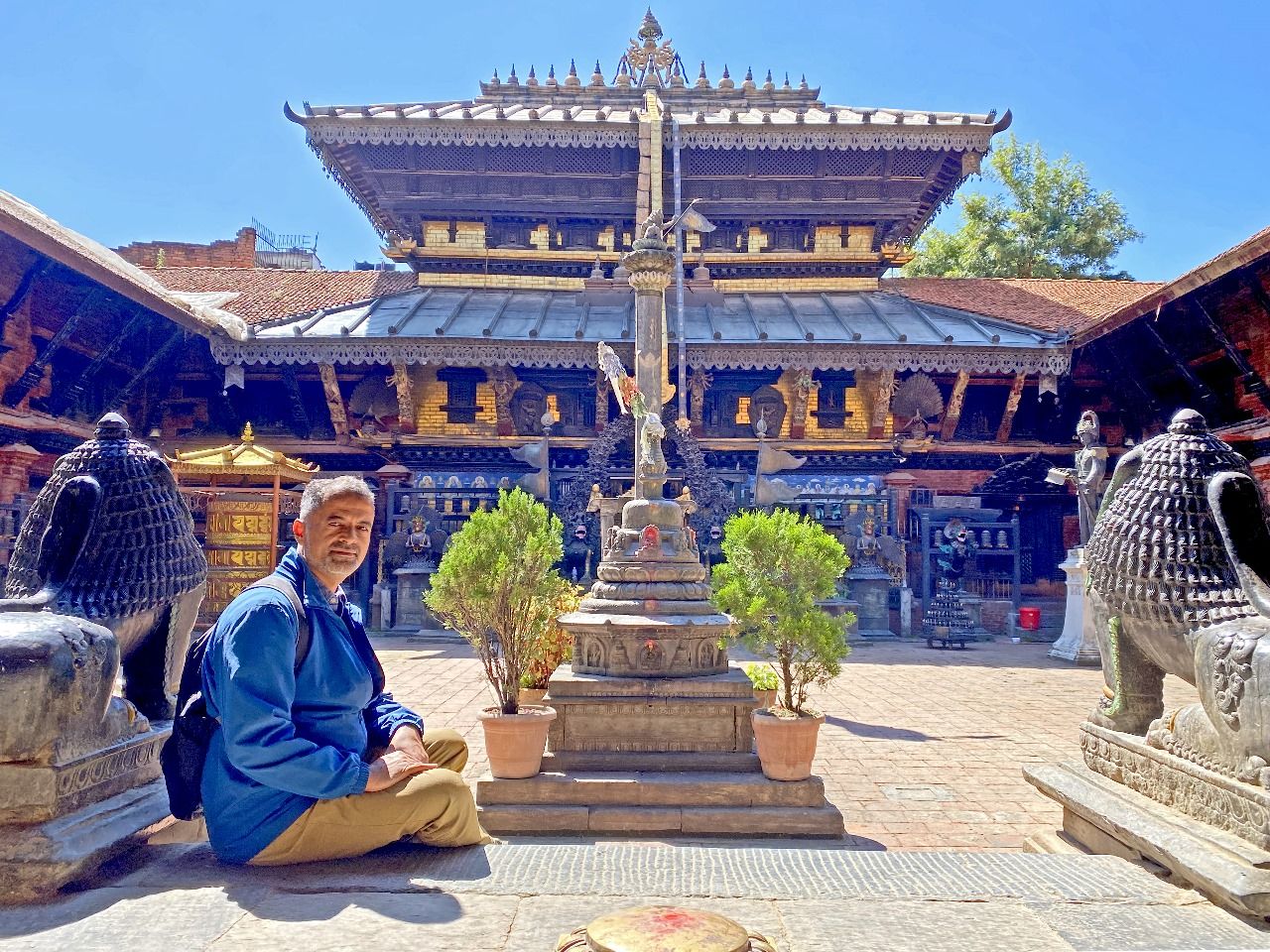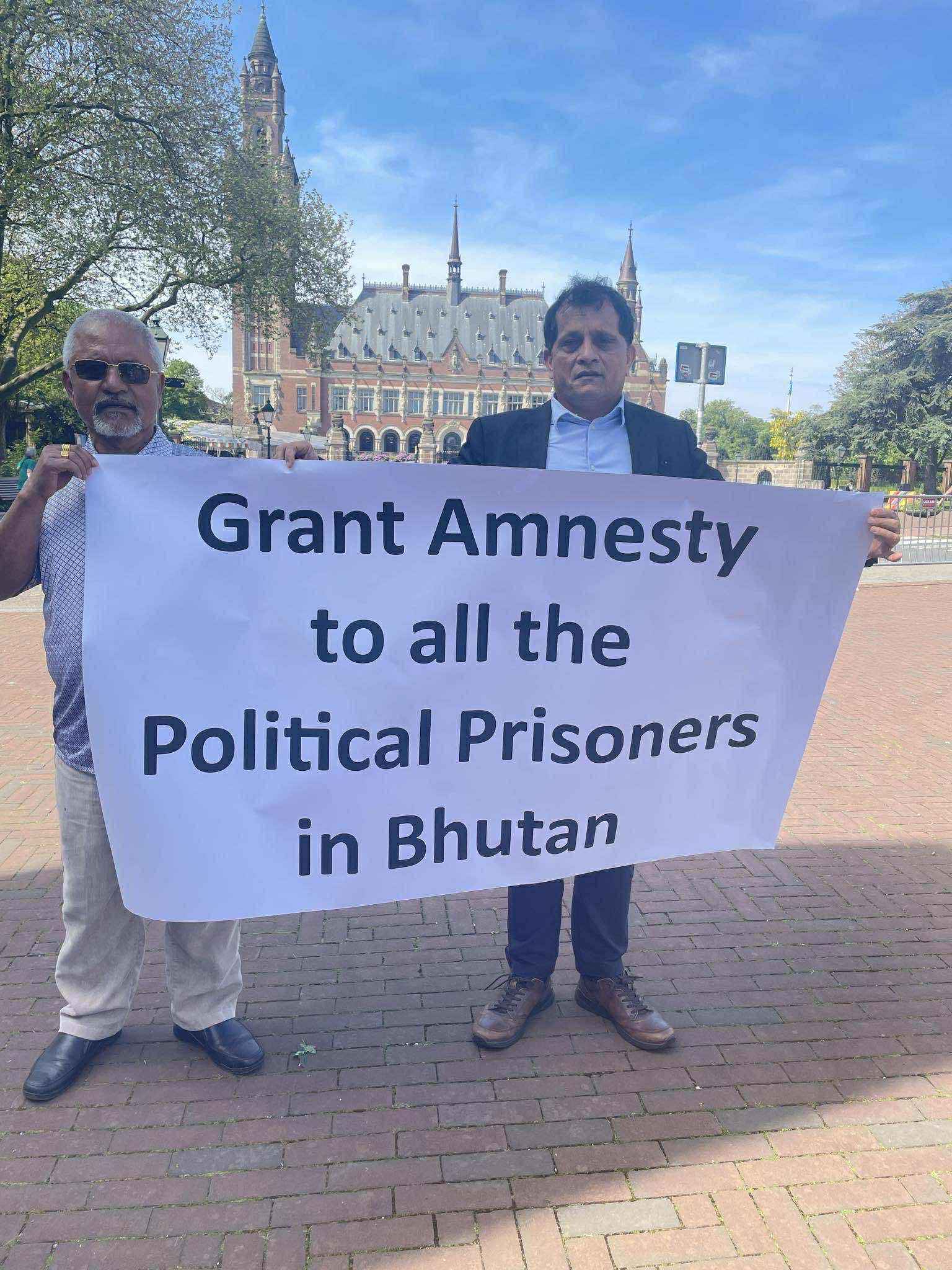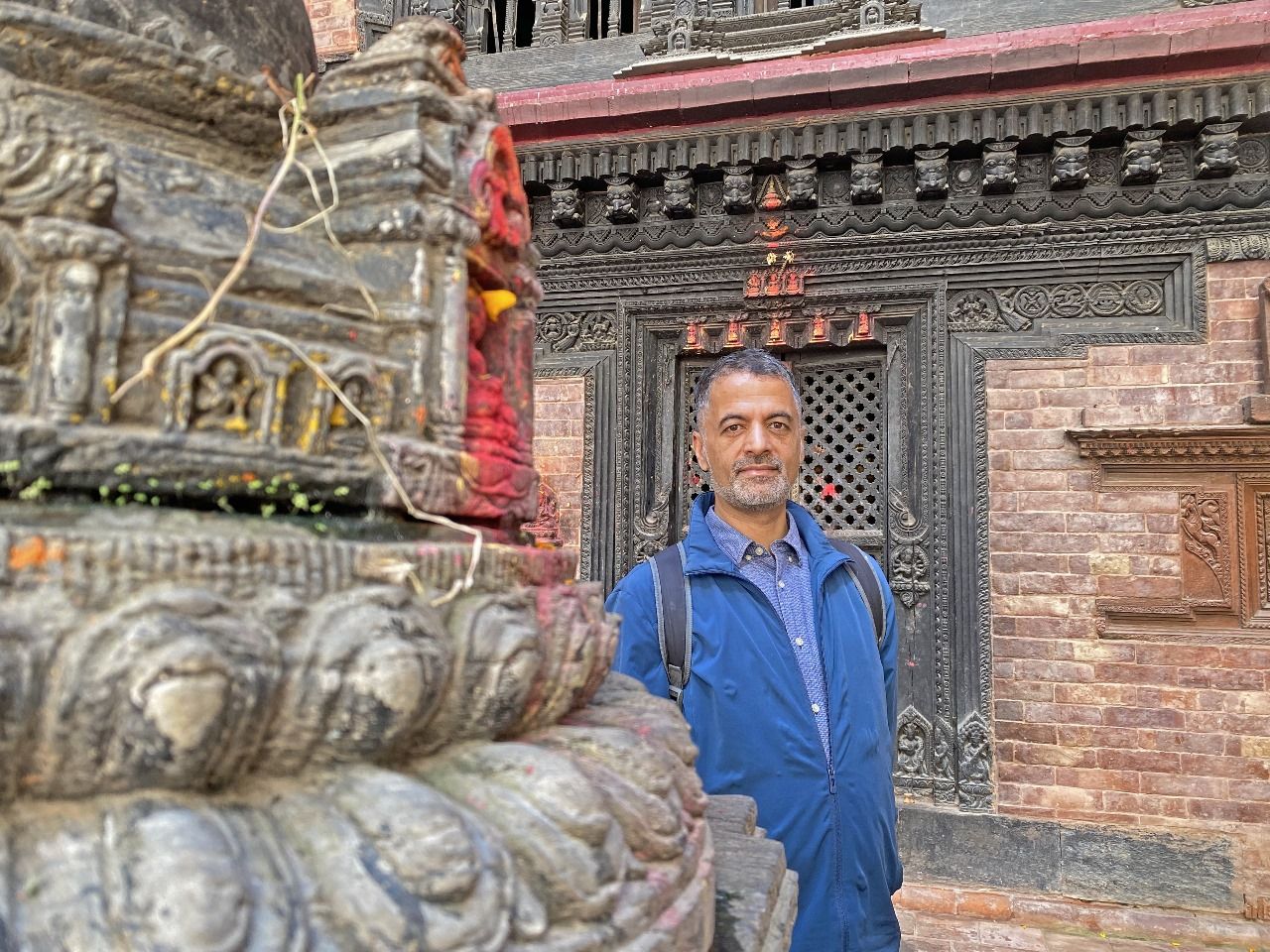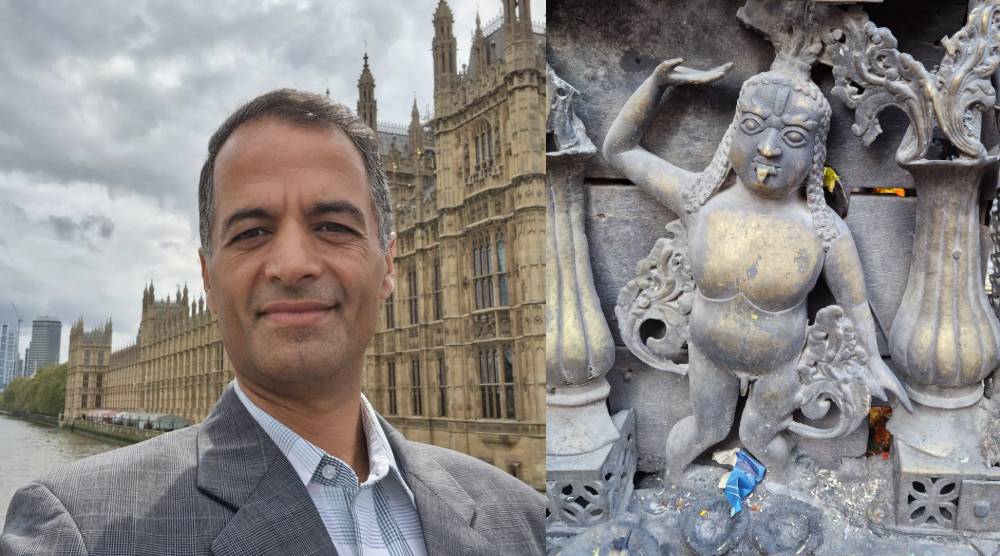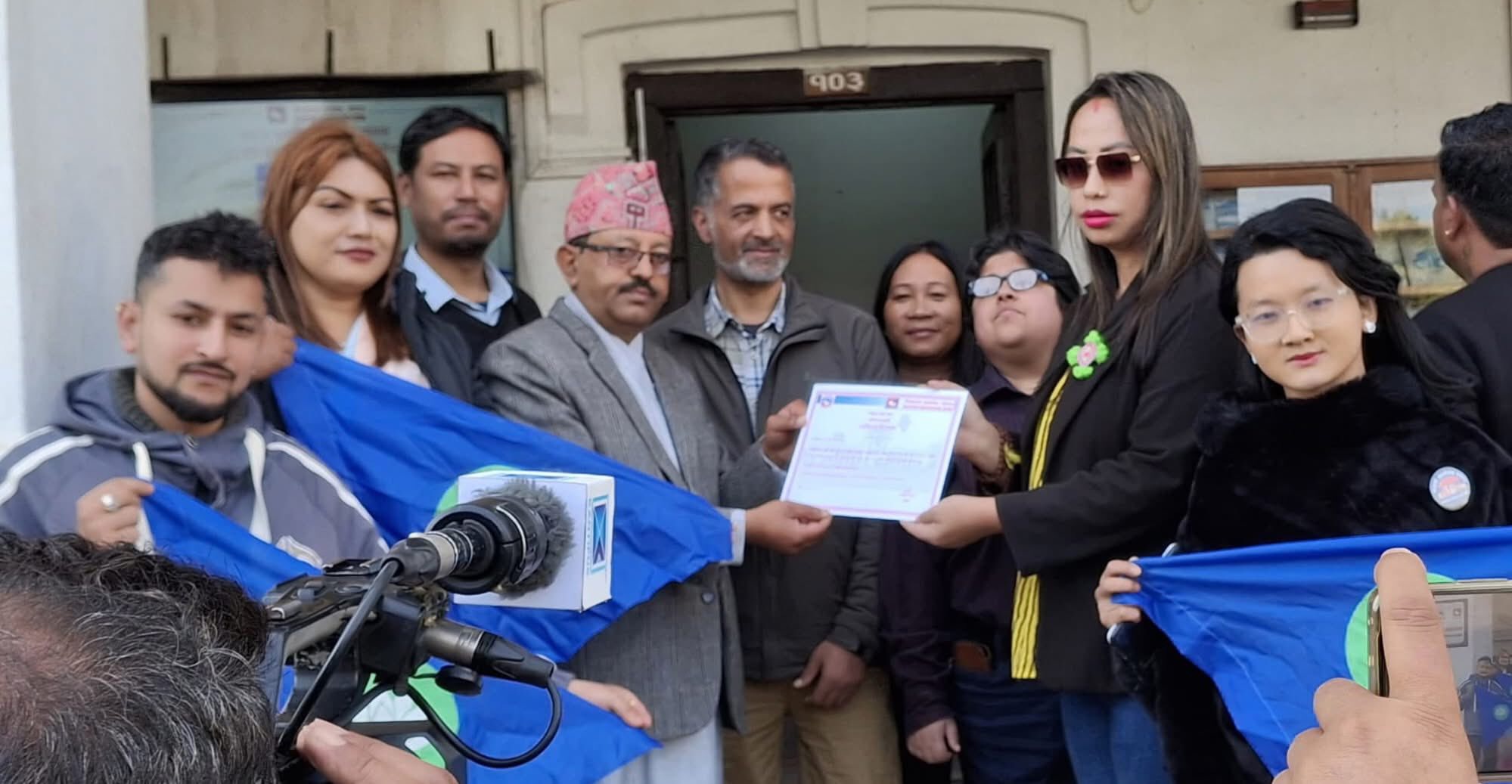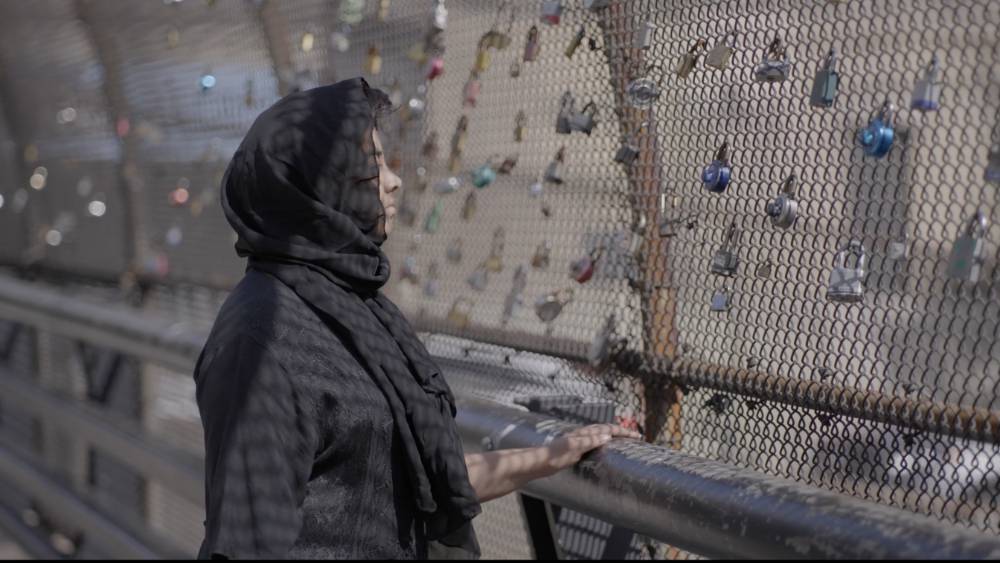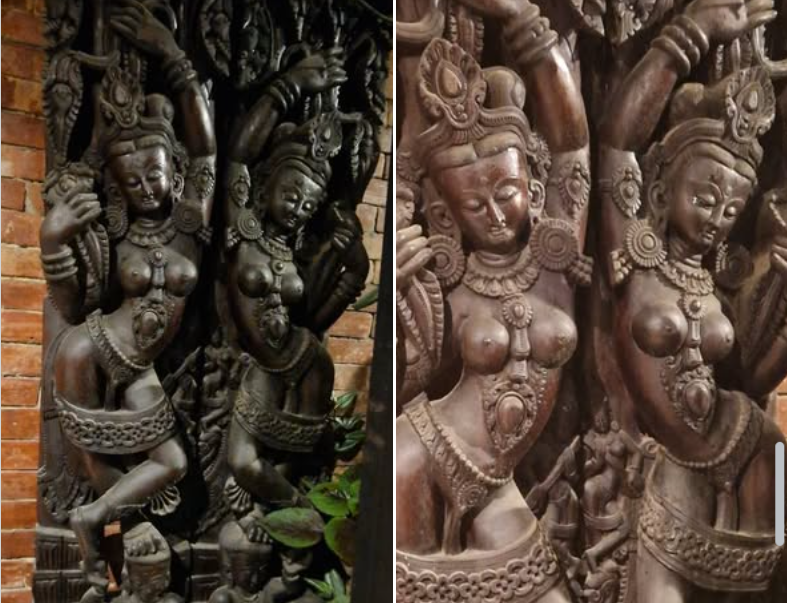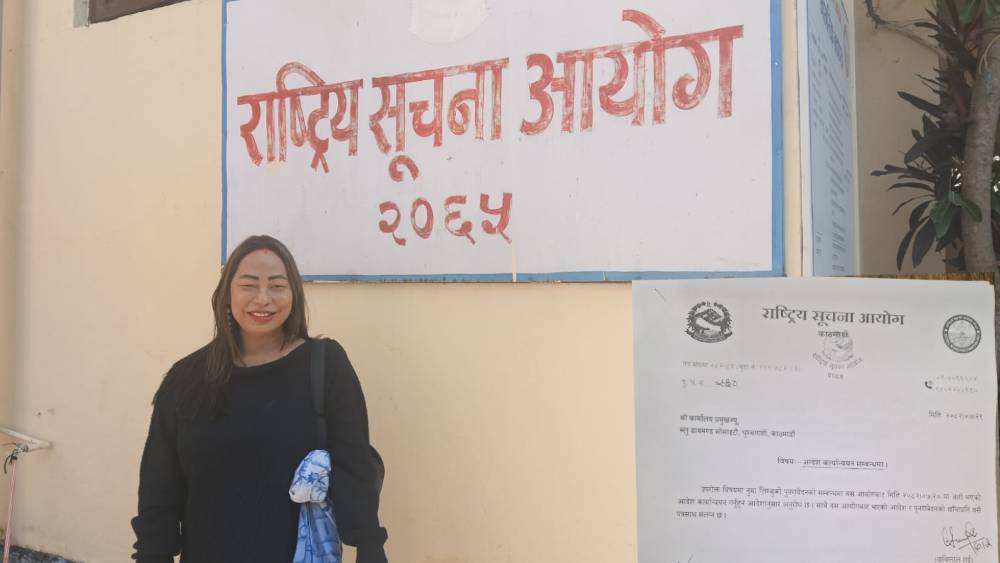You probably picture someone conventionally attractive — a person who’s tall, fit, typically fair-skinned. You probably imagine someone relatable — an actor who strikes a raw emotional connection with filmgoers. But do you necessarily picture someone straight?
You’d be hard-pressed to imagine a non-heteronormative actor with the box office pull of a John Lloyd Cruz or an Anne Curtis, with the same breadth of roles and genres. Vice Ganda aside, there seem to be no queer personalities whom the industry trusts in films and audiences are willing to see time and again. Even then, Vice Ganda’s oeuvre has been limited largely to comedies where he plays the almost one-note archetypal bakla.
So we ask the question: Is the Philippines ready for queer leads to take the fore, in both gay and straight roles? For its gay actors to come out comfortably? For its non-heteronormative heartthrob to woo the masses?
Facifica Falayfay. Image courtesy of VIDEO 48
The roots of LGBTQ narratives in Philippine cinema run deep. We saw Dolphy’s comedic albeit deeply human portrayals of gay characters throughout the ‘50s until the ‘80s in films such as “Jack and Jill,” “Ang Tatay Kong Nanay,” and “Facifica Falayfay.” There was also the unnamed bisexual experimentation of films like “Tubog sa Ginto,” “Nagalit ang Buwan sa Haba ng Gabi,” and “T-Bird at Ako.”
Recently, however, we’ve seen more LGBTQ narratives come to theaters. Last year alone saw the release of Jun Lana’s “Bakit Lahat Ng Gwapo May Boyfriend” and Chris Martinez’s “Working Beks” (both released through Viva Films) as well as Jason Paul Laxamana’s “The Third Party” through Star Cinema. The Metro Manila Film Festival had an important transgender moment with Paolo Ballesteros’ star-making performance in Jun Lana’s “Die Beautiful.”
Notable LGBTQ films in released in the last five years
 In the festival circuit, the CineFilipino Film Festival saw “Ned’s Project,” Lemuel Lorca’s tale of a lesbian’s attempt to start a family. With its transman played by Chai Fonacier, Victor Villanueva’s road comedy “Patay Na Si Hesus” played at QCinema. Petersen Vargas’ queer coming-of-age “2 Cool 2 Be 4gotten” and Samantha Lee’s lesbian love story “Baka Bukas” were both favorites at the Cinema One Originals Film Festival.
In the festival circuit, the CineFilipino Film Festival saw “Ned’s Project,” Lemuel Lorca’s tale of a lesbian’s attempt to start a family. With its transman played by Chai Fonacier, Victor Villanueva’s road comedy “Patay Na Si Hesus” played at QCinema. Petersen Vargas’ queer coming-of-age “2 Cool 2 Be 4gotten” and Samantha Lee’s lesbian love story “Baka Bukas” were both favorites at the Cinema One Originals Film Festival.
These were films that for the most part didn’t shy around labels, as if to say, “What’s the big deal? Let’s treat the queer as normal.”
Citing “The Third Party,” director Jade Castro says, “If you ask me, there’s never been a better year for bisexuals in Philippine cinema than [2016]. For the first time, we have a studio film with a big star, Sam Milby, actually saying the words, ‘I think I’m bisexual.’”
While seeing more diverse, more out-there narratives is important for LGBTQs in the country, that glaring lack remains, a lack that’s been around since Dolphy first got in drag in 1954. There just aren’t enough openly LGBTQ actors playing these parts. It matters that these stories are out there, but it’s another thing altogether to have LGBTQ actors actually representing the community and telling their stories in the public sphere.
Everyday gayness
When I ask people whether the Philippines is ready for a queer box office star, the immediate response has been, “Well, what about Vice Ganda?”
It’s a question of two things: the range of roles the actor is given and the range of LGBTQ people they’re allowed to represent onscreen. While he has stood up for LGBTQ rights offscreen, Vice Ganda’s performance isn’t always to the benefit of the community, in that he’s more likely to reinforce stereotypes rather than dispel them.
“Where [Vice Ganda] is, [he’s] making fun of the image of the bakla, so in that sense it is reinforced. So that when you take out that image of the bakla beyond the stage, it still has that stigma,” says Dr. Jozon Lorenzana, Ph.D., an assistant professor at the Communication Department of Ateneo de Manila University.
An anthropologist whose research has also covered media theory and gender studies, Dr. Lorenzana adds, “That’s why the image of the bakla has never migrated into the respectable domain, because even in its performance, it is still rendered as a kind of amusement, a kind of spectacle. [Queerness] has not crossed into the everyday life, because that’s the ultimate test: When being bakla is everydayness.”
Still, other examples remain scarce. Openly lesbian actors in the Philippines are even harder to find examples of. There is no lesbian box office equivalent to Vice Ganda, nor any out lesbian actors with recent big-studio roles. There are more prominent transgender men and women, such as Aiza Seguerra, Jake Zyrus, and BB Gandanghari, but none have had any recent acting work.
“Feeling ko yung danger, kaya nagkakaroon ng typecast kasi pag sinabing gay role, nag-re-resort lahat sila to the same mannerisms, to the same manner of speaking,” says Juan Miguel Severo
Elsewhere in the world, we’ve seen LGBTQ performers navigate with marginally more ease. Luke Evans, who is openly gay, marked 2017 with roles in “Beauty and Beast” and “The Fate of the Furious.” Other out actors such as Laverne Cox, Jonathan Groff, Russell Tovey, Wanda Sykes, Jane Lynch, and Kate McKinnon have managed fairly successful T.V. and film careers. Beloved Canto-pop star and actor Leslie Cheung came out as bisexual late in his career, and despite some pushback from Hong Kong’s conservative critics, remained largely successful until his suicide in 2003. Most of them have also played LGBTQ characters on T.V. (Groff and Tovey in “Looking,” Cox in “Orange is the New Black”) or critically acclaimed films (Cheung in “Happy Together,” and McKinnon in “Ghostbusters”).
What makes it so difficult for LGBTQ actors to come out? Director Jose Javier Reyes says a big part of it is how public perception always equates LGBTQ people to sexual deviance. “When the LGBT lifestyle is discussed, it is always diminished to sexuality, sexual needs and aberrant behavior,” he says. “Somehow Filipinos still shudder at the thought that there are real and genuine feelings of love shared by two people of the same sex that go beyond the baseline of carnality.”
Alemberg Ang, who produced “2 Cool 2 Be 4Gotten,” also points to an innate culture of avoidance. “Pinoys have this penchant — they know they’re sick but they don’t want to see the doctor? They know already there’s an issue, but as long as they don’t face it, hindi siya totoo.” Likewise, he says, there’s a fear of LGBTQ labels, because labeling comes with having to face the truth of that identity and all the consequences that follow.
From where the actor stands
During the promotional cycle for his film “Working Beks” in 2016, where he played a gay call center agent who goes through an HIV scare, actor Prince Stefan did something unusual: He came out of the closet.
“Dumating sa point na parang ayoko nang mag-showbiz. Parang napagod na rin ako kakapapanggap, kaka-acting,” he said in an interview with CNN Philippines’ Real Talk back in November.
As an actor who hadn’t had any major roles up until that point, the announcement didn’t make too many waves, but it was an important step and Prince Stefan’s post-coming out career will make for a useful case study. So far, he’s gotten two supporting roles in two ABS-CBN teleseryes, “A Love To Last” and “Till I Met You,” either as the gay friend or the gay character’s love interest.
Arguably, he’s been typecast since coming out, but Eric Cabahug, a creative manager and marketing manager at Viva Entertainment, the company that manages Prince Stefan, says, “Looking at it differently, the other side of the coin is if he hadn’t come out, he probably would not have gotten these roles, because he isn’t naman a big star. Because he came out, he was considered for these roles.”
Certainly, there’s pressure from a conservative society to stay in the closet, but are there industry limitations in place? Cabahug explains that there’s nothing contractually preventing Viva’s artists, at the very least, from coming out.
“The limitations on paper are generic — of course, no scandals, no questionable activities and whatnot … Generally I think the industry lets the actor decide for themselves if they want to come out or not. It’s really up to them. As far as Viva’s concerned, we don’t really tell our actors to do things.”
Cabahug says pressure is largely societal, but an actor’s fear that they’ll be typecast plays in as well. “I guess it’s still the stigma of being gay,” he says. “Of course, professionally, there’s that factor of ‘I might get fewer roles’ or ‘People might not see me as a credible leading man.’ There’s that professional consideration na rin.”
“I’ve heard it many times on the set whenever I’m at shoots,” says film and theater actor Gio Gahol. “’Wag mo masyado banggitin na hindi ka straight, sayang ang trabaho,’ or ‘’Pag may jowa ka, ‘wag mo na lang pagsabi. Mas bebenta ka kung straight ka at single.’ I think it’s primarily about marketability. The general audience is always looking for someone to have a crush on and you have to play it that way.”
 Severo shares that as a queer actor, he was able to explain to writers and directors the ways the scripts failed to accurately capture the LGBTQ experience. Photos by CZAR KRISTOFF
Severo shares that as a queer actor, he was able to explain to writers and directors the ways the scripts failed to accurately capture the LGBTQ experience. Photos by CZAR KRISTOFF
Film and T.V. actor Juan Miguel Severo, however, questions the nature of typecasting. While he acknowledges that many gay characters are written as flat stereotypes, he explains that actors also tend to limit their portrayals to these stereotypes. “Gay is not the character, gay is just the sexuality of the character. As an actor kasi, it’s our job to find the human in each character kung paano man siya sinulat,” he says.
“Feeling ko ‘yung danger, kaya nagkakaroon ng typecast kasi pag sinabing gay role, nag-re-resort lahat sila to the same mannerisms, to the same manner of speaking. Meron nang iisang toolbox lang ‘yung pinagkukunan ng kagamitan ‘pag umaarte sila nang bading.”
Jake Macapagal, who starred in Sean Ellis’ critically acclaimed “Metro Manila,” explains that he doesn’t want to play the victim and that from where he stands, talent remains tantamount.
“At the end of the day, I still think it has nothing to do with the LGBTQIA, it’s what you have to offer, your talent. What do you have to offer?” Macapagal asks. “You need to be able to stand up for yourself and tread your way around that small industry. Now, if you don’t fit into the mold of what the mainstream think of an actor is, you don’t have to follow that road. That’s why you can be independent.”
Reyes points, however, to the way the industry treats actors less as actual artists and more as celebrities. “Since celebrities are founded on sale-ability and marketability, their personal lives are given more premium than what they can offer with their craft,” he says.
It is possible to get by on talent alone outside of these systems. But if an actor wants to play the big studio artista game, the stakes are different: Your public persona sells more than talent will.
Roadblocks ahead
While there are no limitations on paper, implicit boundaries remain for queer actors in the industry. Nothing seems to be stopping them from coming out and expressing themselves freely, but there is a valid fear of hitting professional roadblocks after coming out. In that regard, coming out must look like career suicide to a closeted actor in the Philippines.
 “You need to be able to stand up for yourself and tread your way around that small industry,” says Jake Macapagal. “Now, if you don’t fit into the mold of what the mainstream think of an actor is, you don’t have to follow that road. That’s why you can be independent.” Photos by JL JAVIER/Courtesy of HOMME ET FEMME
“You need to be able to stand up for yourself and tread your way around that small industry,” says Jake Macapagal. “Now, if you don’t fit into the mold of what the mainstream think of an actor is, you don’t have to follow that road. That’s why you can be independent.” Photos by JL JAVIER/Courtesy of HOMME ET FEMME
“As things stand, there are LGBTs already working as actors and public figures in the local film and television industries. Ultimately, their decision not to come out is not something we can begrudge them,” says Dr. J. Neil Garcia, Ph.D., a professor at the University of the Philippines College of Arts and Letters, who has written extensively on queer theory. Dr. Garcia adds that coming out is a deeply personal question for LGBTQs, one they should be given the time and space for. “Outing is morally wrong, and it’s perfectly understandable why many Filipino LGBTs choose to remain only selectively out.”
Dr. Lorenzana points to BB Gandanghari, who came out as transgender in 2009, as a case study for career trajectories of LGBTQ actors after they’ve come out. Lorenzana notes that audiences were drawn to the authenticity of the coming out, but perhaps there simply weren’t enough roles, or enough scripts for a transgender actors after that point.
“When you’re a celebrity, you take into account audience tastes because you have to perform for the audience. You need to make a living out of that kind of image,” Lorenzana says. “It is something else if you’re an ordinary person — you only have that identity because you are. You don’t perform for a crowd who have varied opinions and whose opinions actually matter. There was a lot of burden on her part to sustain that kind of performance. As a celebrity, the commercial element will come into play.”
“That’s why the image of the bakla has never migrated into the respectable domain, because even in its performance, it is still rendered as a kind of amusement, a kind of spectacle.” – Dr. Jozon Lorenzana, Ph. D.
The lack of meaningful roles is another serious roadblock to consider for transgender actors. Mimi Juareza, for example, won a Best Actor trophy at the Cinemalaya Philippine Independent Film Festival in 2013 for her moving performance in Eduardo Roy Jr.’s “Quick Change” and took on a supporting role in last year’s “Die Beautiful.”
Still, she finds herself hindered in an industry where roles for a transgender woman are few and far in between. Where they exist, she says, she’s had to compete with cisgender male actors in drag.
“I wish and hope na dadami pa ang mga filmmakers na gagawa pa ng mga makabuluhang pelikula about trans people, so that people will learn to accept fully that that we are also existing, so that people will embrace us more and open more doors for us.”
Role models and ratings
Coming out isn’t always a dead end, because coming out is an opportunity to connect with an audience that craves “reality” in media. Lorenzana says, “The Philippine audience has a penchant for authenticity, because sometimes the actors are seen as not acting but just performing who they are. That’s one of the ways we imagine our actors, like the classic example is Alden and Maine. What is real there? Are they actually acting? That is where we are now in terms of this kind of celebrity-audience relationship.”
Is it possible, then, to have career longevity as an LGBTQ person in the public sphere? Perhaps it’s a matter of pushing limits and learning how to play to the audience, as well as educate them.
There is a need, of course, for more LGBTQs across different media, and having leads in film and on T.V. could do wonders for young Filipino LGBTQs who struggle without role models who look or act like them in media. It’s the ubiquity and accessibility of these role models (superheroes, romantic leads and the like) that make them powerful. Identifying with an LGBTQ role model already helps children begin developing a positive view of themselves, for example. A 2012 paper by Nicole Martins and Kristen Harrison point to a connection between a child’s self-esteem and seeing themselves positively represented in media.
Having openly LGBTQ actors benefits not only audiences, but the films themselves. Severo shares that there have been a handful of opportunities for him to subvert misconceptions and lazy stereotypes in the writing of films he’s been in. As a queer actor, he was able to explain to writers and directors the ways the scripts failed to accurately capture the LGBTQ experience.
This poster for a fictional action film calls back to FPJ-style action and romance, where the gay characters are played by gay actors; offering possibilities for LGBTQ actors to play roles outside the usual typecasting they often experience. Illustration by RAXENNE MANIQUIZ
What’s stopping studios in the Philippines from simply putting out a narrative with a gay love team? What’s in the way of showing audiences LGBTQ role models? Lorenzana explains that it’s a complex mix of factors.
“Who chooses [these role models]?” he asks. “It’s a combination of the audience and the producers. The producers are bound to please the audience and at the same time, please advertisers. And this is where it becomes problematic — when the media industry is practically fueled by advertising money.”
There’s also the subtle influence of institutions such as the Church keeping LGBTQ people out of the dominant discourse. Dr. Garcia cites a similar example with the 2007 LGBTQ-themed GMA show “Out” which was cancelled abruptly after it was condemned by the Catholic Bishops Conference of the Philippines.
“Advertisers decided to pull out after the Church officially issued its anathema against it. The audience was there, the market and/or public was there, but this didn’t really matter in the end, in the face of this powerful institution’s almighty imperatives.”
What makes it so difficult for LGBTQ actors to come out? Director Jose Javier Reyes says a big part of it is how public perception always equates LGBTQ people to sexual deviance. “When the LGBT lifestyle is discussed, it is always diminished to sexuality, sexual needs and aberrant behavior,” he says.
Ang points as well to the gatekeepers of media, particularly the MTRCB, which continues to police queer narratives in media. For instance, “2 Cool 2 Be 4Gotten” received a prohibitive R-18 rating upon its wide release this year, immediately hindering its chances to reach a wider audience — or bigger box office returns.
Still, Ang believes the audience is not as narrow-minded as the gatekeepers perceive them to be. “We had problems with MTRCB, and it’s probably a very small section of the people in MTRCB, [but for the] general public, hindi naman siya issue. Certain segments we have to open up a little bit.”
Even when LGBTQs are given some mainstream exposure, though, Cabahug notes that viewers don’t always bite. He cites the muted box office reception of films like “Working Beks” and “Bakit Lahat Ng Gwapo May Boyfriend” as proof that mass audiences aren’t necessarily keen on more nuanced portrayals of LGBTQs.
“There’s an effort to produce movies that have strong gay characters in the lead, especially in the indie department, a lot of gay-oriented movies with strong gay characters have been produced … I think it’s the audience naman; it’s not as embracing as they are of movies with the usual [narratives].”
Reyes makes a similar point, citing recent T.V. portrayals of LGBTQ characters that scared off advertisers and didn’t seem to make a ripple with ratings. “The much celebrated ‘My Husband’s Lover’ was a good start but that was all it was: a start,” he says. “It made a lot of noise in social media, but despite the sensitive portrayals of Carla Abellana, Dennis Trillo, and Tom Rodriguez, it never made any impact on the ratings game. The same goes for GMA7’s ‘The Millionaire’s Daughter’ that dealt with lesbianism.”
Final answer?
The answer to the initial question — Is the Philippines ready for queer leads to take the fore, in both straight and gay roles? — then, is no. Given the factors within the industry, the unspoken pressure among actors, and an unstudied, unpredictable behavior of the audience, the Philippines is not ready for its gay lead actor moment. What will it take, then?
The interviewees above pointed to a lengthy, multilateral process. First is the need to normalize non-heteronormative narratives, just by sheer volume. Lorenzana explains that it’s outside the purview of the gatekeepers of the big studio system where these narratives can really flourish. He cites “2 Cool 2 Be 4Gotten” as an example, as a queer narrative that functions within the familiar structure of a coming-of-age. This is a means to make non-heteronormative people and practices part of the everyday.
For Severo, it’s a matter of a single big-studio risk that will break through the barriers — a foolproof gay film with big names attached, perhaps a repeat of Olivia Lamasan’s 2009 commercial hit “In My Life.” This unicorn of a film could at once dispel the notion that nuanced gay films can’t bring in box office and open the door for more work in the future. “I think just one risk is enough, one risk that will pay off. If one thing works, they’ll do it again and again,” Severo says.
Perhaps, then, these can lead to the creation of an environment where showbiz personalities aren’t worried about coming out. That’s the second step, very simply, paving the way for someone in the spotlight to be ready to come out into the open.
“For things to change in local show business, things have to change in our culture, as a whole: more and more ordinary LGBTs should come out, and care about themselves and their rights,” Dr. Garcia says. “Once enough Filipino LGBTs become politicized and visible in the public sphere, then maybe this will send the right kind of signal for our many talented performers and actors to proudly embrace their identities and come out, on their own terms.”
Copy : http://cnnphilippines.com


